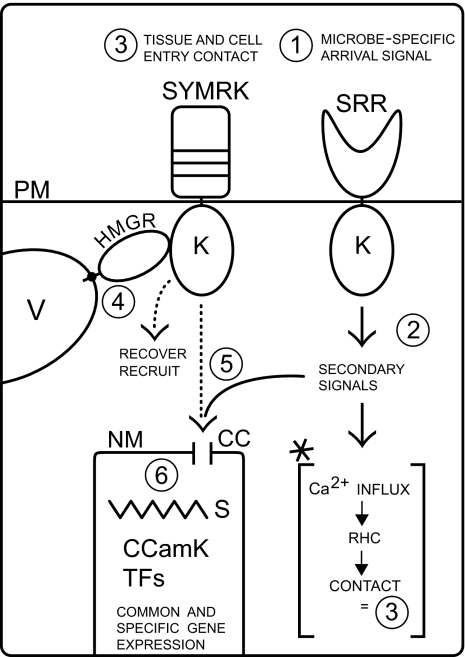Fig. 1.
Model for the role of SYMRK in endosymbiosis. Microbial symbionts emit signals that are perceived by a signal-specific receptor (SRR) to initiate primary responses (1). Activation of the SRR kinase domain elicits secondary signals (2). In bacterial endosymbioses that cross the epidermis, calcium influxes cause root hair curling to form a closed invasion pocket, a process that leads to wall interactions and hence contact (asterisk, 3). AM fungi form appressoria that contact the host wall (3). Contact or wall disturbance causes touch/defense responses (not shown) that are perceived (3) and modulated by SYMRK interference (4). Activated SYMRK might recruit vesicles for polar responses to counteract defense or/and promote local membrane synthesis for invasion or internalization (4) and intervenes in activation of calcium spiking events around the nucleus (5). Calcium spiking is interpreted by CCamK and leads to transcription factor activation and gene expression. CC, cation channel; CCamK, calcium- and calmodulin-dependent kinase; HMGR, 3-hydroxyglutaryl CoA reductase; K, kinase domain; NM, nuclear membrane; RHC, root hair curling; PM, plasma membrane; S, calcium spiking; SYMRK, leucine-rich repeat-type receptor kinase; TF, transcription factor; SRR, signal recognition receptor; V, vesicle.

